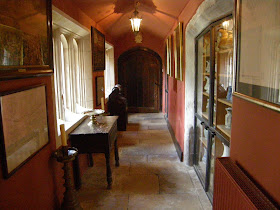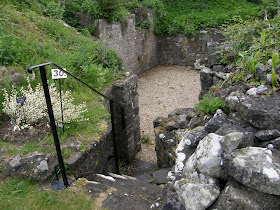
I was tagged recently by liZZie so here are my answers to the questions. I've dotted a few photos around to make it a bit less boring for you{:)
What is your current obsession?
I don't really get obsessive about things but I suppose family history might come under this heading - the photo is me aged three.
What is your weirdest obsession?
No weird obsessions that I can think of.
What are you wearing today?
Dark brown jeans and a cream T-shirt.

What’s for dinner?
Chicken and broccoli pasta bake
What would you eat for your last meal?
The oak smoked salmon rosti that I had at Betty's in Harrogate a couple of weeks ago followed by the homemade Key Lime pie I had in Virginia a few years ago - together they rank as the best food I've ever eaten.

What’s the last thing you bought?
Two skeins of embroidery silk.
What are you listening to right now?
One of my favourite sounds - silence.

If you could have a house totally paid for, fully furnished anywhere in the world, where would you like it to be?
Tucked away in a quiet corner of the South Downs. I've travelled a good deal but never found anywhere I'd rather live than England.
If you could go anywhere in the world for the next hour, where would you go?
To the little cafe on top of the Kasbah in Hammamet, which looked out over the sea on one side and the Medina on the other, to drink Turkish coffee and eat little honey cakes with the same small group of people I was with when I first went.
Which language do you want to learn?
Italian, it's a beautiful language and I love to listen to it even though I don't understand what is being said.

What’s your favourite quote (for now)?
The wonder of the world,
the beauty and the power,
the shapes of things,
their colours,lights, and shades;
these I saw.
Look ye also while life lasts.
The photo is Bourke's Luck Potholes in Blyde River Canyon, South Africa.
What is your favourite colour?
Turquoise
What is your favourite piece of clothing in your own wardrobe?
A three piece set of primrose yellow trousers and strappy top with a floaty short sleeved shirt in shades of primrose, peach and soft sage green.
What is your dream job? The one I have - housewife.
Describe your personal style? Classic

What’s your favourite tree? Er - Rowan?
What are you going to do after this? Put the ironing away
What’s your favourite fruit? Ripe English strawberries

What inspires you? The beauty of the natural world, in this case a South African sunrise.
Your favourite books?
Too many to mention but would include all of Dornford Yates' Berry books
What are you currently reading?
The Daughter of Time by Josephine Tey, Jonah and Co by Dornford Yates and The Garden Cottage Diaries by Fiona Houston.
Go to your bookshelf, take down the first book with a red spine you see, turn to page 26 and type out the first line:
...as 1250, and the rate may have originated in the bailiffs' power to...
from The Parish Chest by W.E.Tate. Not very exciting I'm afraid, it's one of my family/local history text books and is about rates and rating - to be precise it is talking here about the local levies of labour for the maintenance of sea walls in Romney Marsh. Now I'll bet you always wanted to know about that didn't you?

What delighted you the most today?
The scent and sight of wild honeysuckle as I walked in the woods this morning.
By what criteria do you judge a person?
I go on pure instinct, I've learned over the years ago not to judge on appearances. The first lesson was when I was waiting at a bus stop on a deserted street in Chester many years ago. An old man with, I kid you not, a stick over his shoulder with a bundle tied up in a large red spotted handkerchief attached to it, came and stood next to me. He looked like a gentleman of the road and I was a tad nervous. He was chatty and my mum always taught me to be polite so I replied. He turned out to be a delightful real old countryman and one of the most interesting people I've ever met. I was quite disappointed when the bus eventually turned up!
What is your earliest childhood memory?
Being in my cot next to my parents bed, I must have been about 18 months old. I'm lucky and can remember a lot of my childhood very clearly.
The question I'm adding is 'What is your all time favourite film?
Mine is one that is visually beautiful, a lovely gentle story and has a happy ending. It's called 'Enchanted April'.
The rules:
1. Respond and rework; answer the questions on your blog, replace one question you dislike with a question of your invention, add one more question of your own.
2. Tag eight other people. As ever I'm not tagging anyone as not everyone has time or inclination, I found it interesting to do though so if you want to have a go then please do.























































